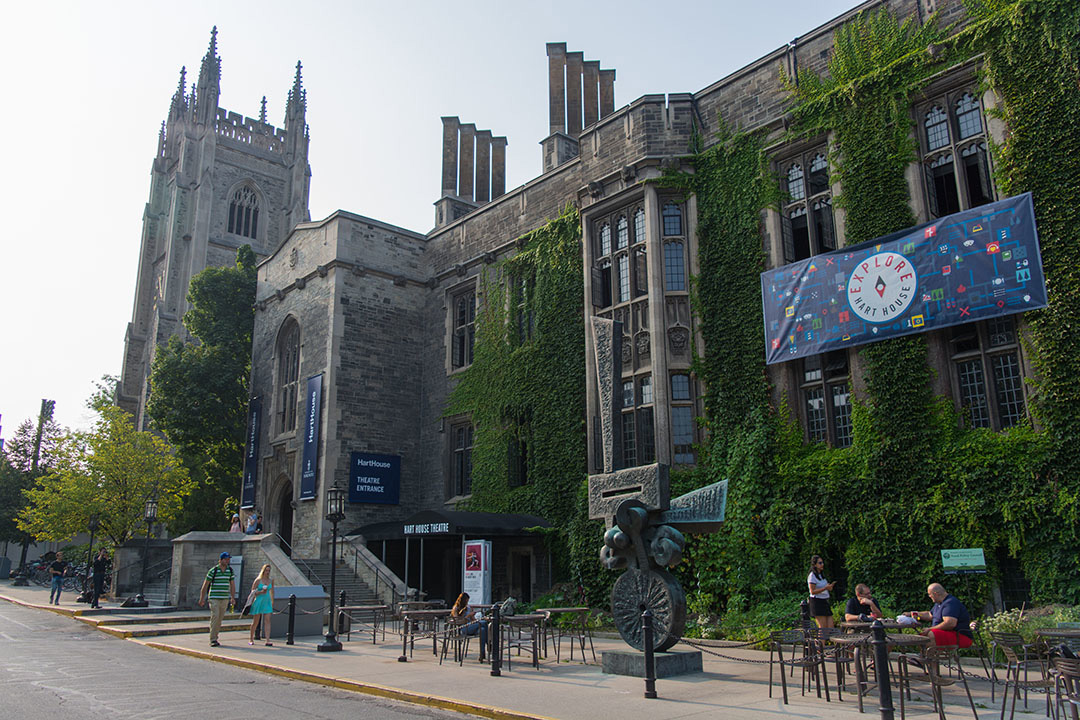The University Affairs Board at UTSG recently approved a motion to increase the amount that students pay to Hart House by 4.9 per cent.
Hart House is a U of T centre that aims to help students connect to the university community and to engage with broader societal conversations. Despite the fact that it was hit hard by the pandemic, administrators say that Hart House has engaged effectively with students in the past few years and continued to offer them both virtual and in-person programming. The board also heard a presentation on the centre’s five-year plan, which details how it will increase representation in its programming and remain a vital resource for students.
Fee increases
Based on feedback from the Council of Student Services, chaired by the University of Toronto Students’ Union President Alexa Ballis, as well as the approval of the Hart House Council of Stewards, which includes many current students, Hart House proposed increasing its fees by 4.9 per cent.
This means that the fee students pay per semester to support Hart House will increase from $107.49 to $112.76 for full-time UTSG students and from $21.50 to $22.55 for part-time UTSG students. The fee will also increase from $3.30 to $3.46 for full-time students at UTM and UTSC, respectively, and from $0.67 to $0.70 for part-time students at those campuses.
The proposal was unanimously approved by the University Affairs Board.
Hart house services during the pandemic
Though it was hit hard by the pandemic, John Monahan, Hart House’s warden, explained in his presentation to the board that the centre has adapted effectively to its circumstances. According to Monahan, Hart House’s virtual programming has been very successful and allowed it to connect with students across all three campuses and around the world.
From 2020 to 2021, the centre has had 111,611 virtual asynchronous engagements with its on-demand programming and 24,133 synchronous participants in its online content. It has also signed up over 5,000 non-students to its fitness programs.
Monahan added that the centre has offered in-person opportunities when it has been able to. This includes socially distanced music rehearsals in the Great Hall and movie screenings. Moreover, Hart House has renovated several of its spaces, including the south dining room and its universal washroom.
Though Hart House has seen less engagement this year than in previous years, its international student and graduate student participation have increased from 15 to 24 per cent and from 33 to 40 per cent, respectively.
It has also worked to increase its engagement with Indigenous students through a variety of initiatives and has expanded its global engagement through its relationship with partners like Ashoka University in India.
Future plans
Moving forward, Hart House will focus on expanding its on-demand programming, including its Living Well podcast. The centre will aim to increase representation of racialized leaders at Hart House and continue to feature racialized instructors to support the mental health of students.
With regard to its fitness program, it plans to provide more exclusive hours for targeted groups, such as women, and to develop programs specifically for LGBTQ+ students or students that require accessibility support.
Hart House aims to be financially dependent on student fees and its own business ventures. It expects the bulk of its revenue over the next year to come from hospitality and fitness ventures, which includes hosting weddings and offering gym memberships to the wider public. Its revenue will go toward maintaining its staff and facilities, as well as making its spaces more accessible. Two per cent of its revenue will be provided to its various student clubs and committees.
The centre also provided a five-year plan, which includes five key goals that the centre will work on in the long term: fostering a climate of inclusivity, encouraging students to explore themselves “through the Arts, Dialogues and Wellness,” offering students “Rich Experiential Learning Opportunities,” deepening student engagement with broader issues, and helping students to access resources and foster relationships so they can face modern challenges.


